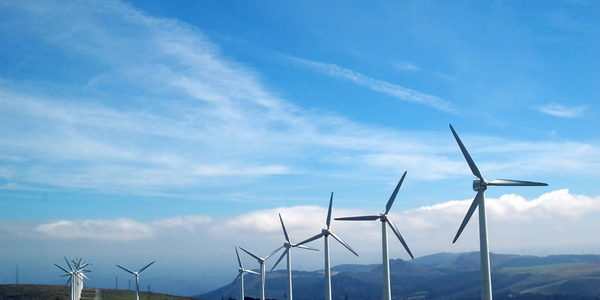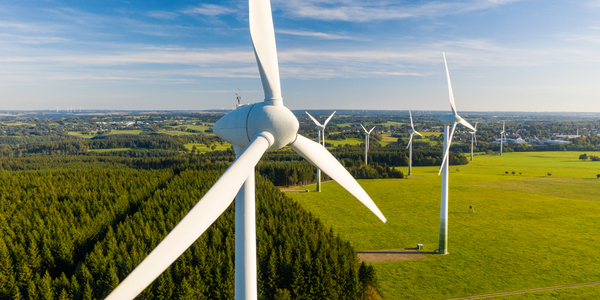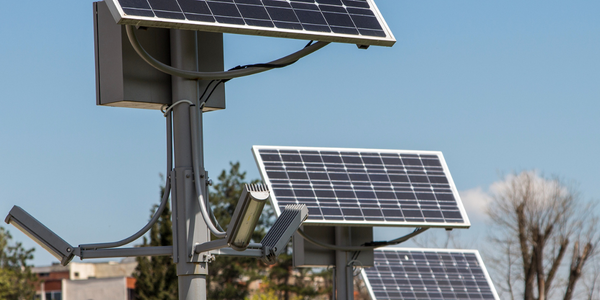公司规模
Large Corporate
地区
- America
国家
- United States
产品
- Google Cloud BigQuery
- Looker
技术栈
- Cloud Dataflow
- LookML
- BigQuery query engine
实施规模
- Enterprise-wide Deployment
影响指标
- Productivity Improvements
- Cost Savings
技术
- 平台即服务 (PaaS) - 数据管理平台
- 分析与建模 - 实时分析
适用行业
- 可再生能源
适用功能
- 商业运营
用例
- 预测性维护
- 供应链可见性(SCV)
服务
- 云规划/设计/实施服务
- 数据科学服务
关于客户
Sunrun is the #1 residential leader in solar power. Every six minutes someone installs a Sunrun solar system. Sunrun offers clean, reliable, affordable solar energy and battery storage solutions to help save the environment, and save their customers money. Between 2007 and 2019, Sunrun produced 7.4 B kilowatt-hours of clean energy. And during 2019 alone, Sunrun saved their typical customers 10-40% on their energy bills, resulting in $300 M total savings. As demand for clean, renewable energy grows, Sunrun faces the challenge of scaling operations, production, and services so they can continue to provide an exceptional customer experience while creating a more sustainable future.
挑战
Sunrun, a leading provider of residential solar power, was facing challenges in managing their growing volumes of data across installation operations, installed systems, customer operations, and sales. The company was using a legacy data stack that required IT and data team support for almost every internal data request. This reliance on IT and the data team drained time and resources with ad-hoc requests, changing requirements, and backlogs of reporting requests. Moreover, the data pipelines and infrastructure weren’t scaling to meet either data growth or increased demand for data access. The data team struggled to respond to changing data sets or new sources of data as quickly as the business demanded, and Sunrun's legacy Oracle data warehouse was not equipped to scale across growing analytics demands or unlock predictive insights with ease.
解决方案
Sunrun decided to migrate to Google Cloud’s smart analytics platform — including Looker and BigQuery — to reduce ETL complexity, run fast queries with ease, and make data accessible and trusted throughout the organization. Rather than build complicated data pipelines with complex ETL processes, Sunrun loaded most data directly into BigQuery without transformation. Sunrun leveraged the power of BigQuery and Cloud Dataflow to transform approximately 20% of the data available in BigQuery. However, the majority of data transformation occurred at query time through a combination of Looker’s Git-versioned data modeling layer, LookML, and the BigQuery query engine. This allowed Sunrun to avoid complicated, brittle, and expensive ETL processes, and simplified the data pipeline. Sunrun’s cloud migration was finished in only 18 months, and today they are 100% in the Cloud with improved access to trusted metrics for their executives and different required departments.
运营影响
数量效益

Case Study missing?
Start adding your own!
Register with your work email and create a new case study profile for your business.
相关案例.

Case Study
Remote Monitoring & Predictive Maintenance App for a Solar Energy System
The maintenance & tracking of various modules was an overhead for the customer due to the huge labor costs involved. Being an advanced solar solutions provider, they wanted to ensure early detection of issues and provide the best-in-class customer experience. Hence they wanted to automate the whole process.

Case Study
Vestas: Turning Climate into Capital with Big Data
Making wind a reliable source of energy depends greatly on the placement of the wind turbines used to produce electricity. Turbulence is a significant factor as it strains turbine components, making them more likely to fail. Vestas wanted to pinpoint the optimal location for wind turbines to maximize power generation and reduce energy costs.

Case Study
Siemens Wind Power
Wind provides clean, renewable energy. The core concept is simple: wind turbines spin blades to generate power. However, today's systems are anything but simple. Modern wind turbines have blades that sweep a 120 meter circle, cost more than 1 million dollars and generate multiple megawatts of power. Each turbine may include up to 1,000 sensors and actuators – integrating strain gages, bearing monitors and power conditioning technology. The turbine can control blade speed and power generation by altering the blade pitch and power extraction. Controlling the turbine is a sophisticated job requiring many cooperating processors closing high-speed loops and implementing intelligent monitoring and optimization algorithms. But the real challenge is integrating these turbines so that they work together. A wind farm may include hundreds of turbines. They are often installed in difficult-to-access locations at sea. The farm must implement a fundamentally and truly distributed control system. Like all power systems, the goal of the farm is to match generation to load. A farm with hundreds of turbines must optimize that load by balancing the loading and generation across a wide geography. Wind, of course, is dynamic. Almost every picture of a wind farm shows a calm sea and a setting sun. But things get challenging when a storm goes through the wind farm. In a storm, the control system must decide how to take energy out of gusts to generate constant power. It must intelligently balance load across many turbines. And a critical consideration is the loading and potential damage to a half-billion-dollar installed asset. This is no environment for a slow or undependable control system. Reliability and performance are crucial.

Case Study
Remote Monitoring and Control for a Windmill Generator
As concerns over global warming continue to grow, green technologies are becoming increasingly popular. Wind turbine companies provide an excellent alternative to burning fossil fuels by harnessing kinetic energy from the wind and converting it into electricity. A typical wind farm may include over 80 wind turbines so efficient and reliable networks to manage and control these installations are imperative. Each wind turbine includes a generator and a variety of serial components such as a water cooler, high voltage transformer, ultrasonic wind sensors, yaw gear, blade bearing, pitch cylinder, and hub controller. All of these components are controlled by a PLC and communicate with the ground host. Due to the total integration of these devices into an Ethernet network, one of our customers in the wind turbine industry needed a serial-to-Ethernet solution that can operate reliably for years without interruption.

Case Study
Temperature monitoring for vaccine fridges
Dulas wanted a way to improve the reliability of the cold chain, facilitating maintenance and ensuring fewer vaccines are spoiled. Dulas wanted an M2M solution which would enable them to record and report the temperature inside vaccine refrigerators.

Case Study
IoT Powering A New Way to Light Streets with Bifacial Solar Panels
When James Meringer’s commercial contracting business experienced a rapid increase in solar projects, he also saw an opportunity to extend the benefits of solar by using the bifacial solar panels he’d become familiar with in new ways. Bifacial solar panels enable sunlight from both sides of the panel, making it a more efficient harvest of solar power. Seeing the panel’s power, James and his team set out to use the same technology for street lighting. Until now, solar street lights have served as utilitarian solutions that force designers to choose between form and function. The Mira Bella Energy team has changed that.







